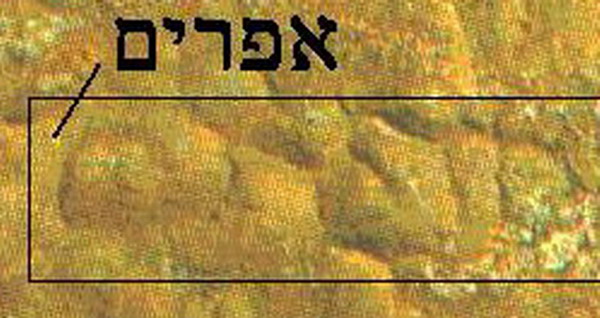The Samaritans from a Brit-Am Lost Ten Tribes Perspective.
 | Samaritan
Film Actress,
Sophie Tzdaka, who converted to Judaism. |
Origins. Biblical Account Reflected in
Assyrian Inscriptions
The Twelve Tribes of Israel divided into two separated
Kingdoms. The majority were in the north in the Kingdom of Israel which was
conquered by the Assyrians and all of its inhabitants transferred to different
parts of the Assyrian domain.
After the Ten Tribes had been exiled,
Then the king of Assyria brought people from Babylon,
Cuthah,
Ava,
Hamath,
and from Sepharvaim,
and placed them in the cities of Samaria instead of the children of Israel; and
they took possession of Samaria and dwelt in its cities (2-Kings 17:24).
Assyrian Records Echo the Biblical
Account:
The Assyrians describe how they defeat the Israelites of Samaria and deported them. They then brought in other peoples to colonize the vacated area.
# The
inhabitants of Samaria/Sa]merina,
who agreed [and plotted] with a king [hostile to] me, not to do service and not
to bring tribute [to Ashshur]
and who did battle, I fought against them with the power of the great gods, my
lords. I counted as spoil 27,280 people, together with their chariots, and gods,
in which they trusted. I formed a unit with 200 of [their] chariots for my royal
force. I settled the rest of them in the midst of Assyria. I repopulated
Samaria/Samerina
more than before. I brought into it people from countries conquered by my hands.
I appointed my eunuch as governor over them. And I counted them as Assyrians. #
(Nimrud
Prisms, COS 2.118D, pp. 295-296). #
The new heathen settlers were known as "Samaritans" after the
capital of the former kingdom of northern Israel, "Samaria", that the Assyrians
placed them in. They are also referred to in Rabbinical Literature as "Cuthim"
(singular, "Cuthi") after Cutha in Babylon were some of them had come from.
The Samaritan settlers in Samaria were soon attacked by a plague of wild lions.
Bands of wild lions in those times entering settlements and attacking the
inhabitants are also recorded elsewhere in the Middle East. The climate was
different at that time. There was more vegetation and forestry covering. Not
only lions but even herds of wild elephants were to be found in the region of
Syria. The attacks by lions were consequently reported to the king of Assyria.
The reason for the predations of these feline beasts against the Samaritan
settlers was given as that they "Know not the manner of the God of the land" (2
Kings 17:24). It was decided to send an Israelite Priest to teach them the
former religion of the area.
(2-Kings 17:25) And it was so, at the beginning of their dwelling there, that
they did not fear the LORD; therefore the LORD sent lions among them, which
killed some of them. 26 So they spoke to the king of Assyria, saying, "The
nations whom you have removed and placed in the cities of Samaria do not know
the rituals of the God of the land; therefore He has sent lions among them, and
indeed, they are killing them because they do not know the rituals of the God of
the land." 27 Then the king of Assyria commanded, saying, "Send there one of the
priests whom you brought from there; let him go and dwell there, and let him
teach them the rituals of the God of the land." 28 Then one of the priests whom
they had carried away from Samaria came and dwelt in Bethel, and taught them how
they should fear the LORD.
So they
feared the LORD, and from every class they appointed for themselves priests of
the high places, who sacrificed for them in the shrines of the high places. They
feared the LORD, yet served their own gods, according to the rituals of the
nations from among whom they were carried away (2 Kings 17: 32-33) .
So
these nations feared the LORD, yet served their carved images; also their
children and their children's children have continued doing as their fathers
did, even to this day (2 Kings 17:41) ..
Israelite and Jewish Contacts with the
Samaritans
Some of the Samaritans intermarried with some few of those northern
Israelites whom the Assyrians had not exiled (Midrash Eliyahu Zuta 2;1). Jews from Judah
also to some degree later intermixed with them. When Ezra led the return of
Jewish Exiles to Judah the Samaritans approached him and offered to assist in
rebuilding the Temple (Ezra 4). Ezra rejected the offer. The Samaritans then
joined up with the heathens round about who did what they could to impede the
Temple construction and associated Jewish resettlement in Jerusalem and its
surroundings. Eventually the Samaritans were conquered by the
Hasmonean-Maccabees and subjected to Jewish rule. They came under heavy Jewish
influence, both Orthodox-Pharisaic and sectarian. There was a period when they
were considered to be on the same level in many ways as regular Jews even though
they rejected much of the Oral Traditions and explanations of Biblical Verses.
It was then discovered that a group amongst them secretly still worshipped a
pagan god in the shape of a dove. After that associations between Jews and
Samaritans became more restricted and henceforth they were classified as being
on the same level as all other non-Jewish Gentiles. They themselves upon
occasion could be violently anti-Jewish. According to Josephus, when the Jews
were powerful the Samaritans emphasized their "Hebraic" connections but when the
Jews were persecuted they claimed to be of Phoenician (Canaanite) stock. They
were once very numerous and numbered in the millions though today there are only
a few hundred left. They use a form of writing derived from the old Israelite
"Phoenician" (Paleo-Hebrew) script.
In the 1850s the Arabs (under Turkish rule) planned a massacre of the Samaritan
community. Jewish settlers however prevailed upon the British Consul to
intervene on their behalf and thus they were saved from extermination.
Influence on Early Christianity and on
the Jewish Karaite
Movement
Early Christianity in some opinions was influenced by the Samaritans.
Ernest L. Martin and others wrote on this matter.
Ernest L. MARTIN, "The People That History Forgot. The
Mysterious People Who Originated The World's Religions", U.S.A., 1993.
The claims of Martin are supported by the reported tendency of Samaritans to convert to Christianity with relative alacrity.
See Also:
The Samaritans by Alan David Crown, 1989, p.215.
http://books.google.co.il/books/about/The_Samaritans.html
So too, the Jewish Karaite sect may have had Samaritan antecedents both through the Sadducees some of whom intermarried with Samaritans and also in
Mesopotamia where the Karaites in their historical format originated.
The ideology and psychological outlook are similar.
They are based on resentment of mainstream Orthodox Judaism.
Belief in Israelite Origins and in
Kinship with the British and French
In the course of time the "Samaritans" came to identify themselves
as the Israelite Tribes of Ephraim and Manasseh. The Samaritans still highly
revere Joshua ben Nun (from the Tribe of Ephraim) and regard him as their
founder.
They believed their priests were descendants of Pinchas son of Elazar son of
Aaron brother of Moses.
Batsheva
BONNE, "A Genetic View of the Samaritan Isotope", Boston University, 1965,
Bonne p.7.
In the past, priestly families from Judah had intermarried with them and in some
matters they may have preserved genuine traditions.
Mills (1864) writes:
"There was a tradition amongst them which has yet hardly died out
that large numbers of their brethren were dwelling in various parts of the world
in England, France, India, and elsewhere".
Bonne p.33, Ernest L. MARTIN, p.38 brings the same quotation in the name of a Dr. Mimpriss, 1865.
[It is worth noting that the Druze of Israel and Lebanon had similar traditions
and also regarded themselves as having kinfolk amongst the Jews, British,
French, and in India.]
We see that the Samaritans attempted to identify themselves as northern
Israelites from the Tribes of Ephraim and Manasseh. Some few of them may indeed
have been descended from the ancient Israelites and this may explain their
claimed link to England and France.
See Also:
Samaritans in All Parts of the Empire
At one stage the Samaritans numbered in their millions though now they have been reduced to a few hundred. There was once a Samaritan Diaspora.
Some of them may have gone to Africa and intermixed with the natives thus giving rise to certain reported traditions and customs.
Encounters with
Yair
Davidiy
Yair Davidiy (founder of Brit-Am, Movement of the Ten Tribes) during his 18
month regular IDF Service (1975-76) spent about a month in Schechem (Nablus) and
became acquainted with some of the Samaritans living near there. They have their
own particular features found also amongst part of the local Arab Moslem
population. Many of them have a double lobe on their ears as a result of
frequent intermarriage. Apart from that, they seem fairly easy to get along
with, pleasant of disposition, and moderately intelligent. Some of them have red
hair. They seem basically pro-Israeli in their political outlook though a
veteran more senior Druze Border Guard whom I spoke with looked on them with a
strongly suspicious reservation.
Appendices:
(Appendix 1)
Was the Samaritan Belief in English Kinship the Result of Christian Missionary
Deceit in the 1600s?
Response to H.23 by Jim
Ridolfo
http://rid.olfo.org/2010/03/response-to-b-10
-rhetoric-in-circulation-tracing-the-paths
-of-discourse-in-the-public-sphere/
Extracts:
in 1671, British scholar Robert
Huntington visited Palestine and tricked the Samaritans into believing that he
represented their "long lost brethren" from Europe. This deceit then set in
motion another wave of epistles, this time addressed to their brothers in
England (5). When the epistles arrived in England, they were not immediately
delivered to Huntington:
The first epistle came into the hands of Thomas Marshall of Oxford, who in 1675
addressed a Hebrew epistle to the Samaritans, which informed them that the
writers were of the race of Kapheth; its substance was a pious attempt to
proselytize the sect for the Christian Messiah. Huntington forwarded this
letter, accompanied by one from himself. (6)
Samaritan letter of response
Translated from the Samaritan by Jim Ridolfo 3.15.2010
# In the name of
Y-H-V-H, our G-d and the G-d of our fathers, we begin (this letter) with the
reminder of his name in our hands. May peace be upon you, my dear brother, with
love close to my heart: May G-d protect you and may you have many more days! I
give you notice that your letter reached us, and that there has been from us
much joy, and what you said was already in our hearts. In this letter, you
proposed to us questions in Arabic about the Hebrew language. This language, the
Hebrew language, is known to my brothers and we believe in the Law of Moses and
what it prescribes. You say, my brother, that he is among you anyone of us
brothers who keep the Law of Moses, our prophet is the one thing that we do not
believe, consequently we have sent to you a Torah (to your country). You are to
us our brothers. #
Huntington's deceit in pretending to be one of their long lost Brethren is
propagated long after his death. After the exchanges of 1675, the exchange of
epistles continues with other scholars from Paris and England well into the 19th
century. Because of Huntington's
deceit, these 19th century epistles continued to reflect the belief that the
Samaritans had long lost brothers in Paris and England. Consequently, the 150
years after Huntington's lie the Samaritans continued to address their epistles
to the Samaritans of Paris, England, etc.
(Appendix 2)
Wikipedia.
Samaritans
http://en.wikipedia.org/wiki/Samaritan
Extracts:
Although historically they were a large community, up to more than a
million in late Roman times, then gradually reduced to several tens of thousands
up to a few centuries ago, their unprecedented demographic shrinkage has been a
result of various historical events, including most notably the bloody
repression of the Third Samaritan Revolt (529 CE) against the Byzantine
Christian rulers and the mass conversion to Islam in the Early Muslim period of
Palestine.[5][6] According to their tally, as of November 1, 2007, there were
712[1] Samaritans living almost exclusively in two localities, one in Kiryat
Luza on Mount Gerizim near the city of Nablus (Shechem) in the West Bank, and
the other in the Israeli city of Holon.[7] There are, however, followers of
various backgrounds adhering to Samaritan traditions outside of Israel
especially in the United States.
Much of the local Arabic population of Shechem is believed to be descended from
Samaritans who converted to Islam.
As of November 1, 2007, there were 712[1] Samaritans half of whom reside in
their modern homes at Kiryat Luza on Mount Gerizim, which is sacred to them, and
the rest in the city of Holon, just outside Tel Aviv.[7][28] There are also four
Samaritan families residing in Binyamina, Giv'at Ada, Matan and Ashdod.
Until the 1980s, most of the Samaritans resided in the Samarian town of Shechem/Nablus
below Mount Gerizim. They relocated to the mountain itself near the Israeli
settlement neighborhood of Har Brakha as a result of violence during the First
Intifada (1987-1990). Consequently, all that is left of the Samaritan community
in Shechem/Nablus itself is an abandoned synagogue. The Israeli army maintains a
presence in the area.[28]
...there has been a history of genetic disease within the group due to the small
gene pool. To counter this, the Samaritan community has recently agreed that men
from the community may marry non-Samaritan (primarily, Israeli Jewish) women,
provided that the women agree to follow Samaritan religious practices.
|






